10 Plants That Bloom in Winter for Some Cheer During the Coldest Time of Year
Add some color in around your home with these winter flowering plants.
We're used to flowers being a welcome sign of spring—but some also bloom throughout the coldest months of the year. There are several winter flowering plants that can provide colorful blooms both inside and outside your home even when the frost hits. Ready to pick your plants? Here are 10 expert selections that will provide beautiful foliage during the winter.
Related: 16 Low-Maintenance Houseplants Most Likely to Survive All Year Long
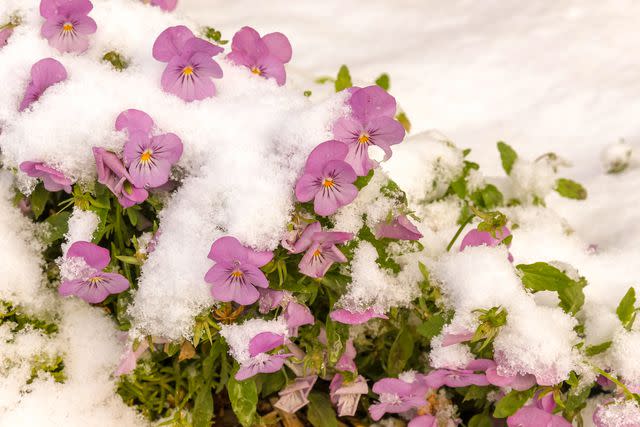
Olga Lipatova/Getty Images
Indoor Winter Flowering Plants
Schlumbergera
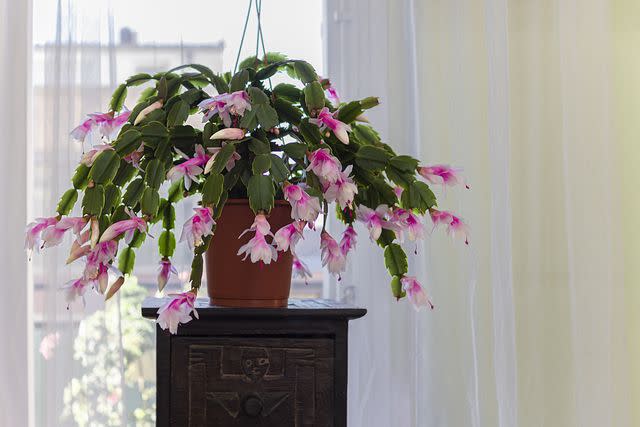
C. Romance/Getty Images
Schlumbergera or the Christmas/Thanksgiving Cacti is a small genus of jungle cacti found in humid and somewhat shady areas of southeastern Brazil and are prized during the holidays for their winter blooms. “They'll thrive in bright indirect to medium indirect light and are not suited for long periods of intense, direct sun,” advises Paris Lalicata, The Sill's plant expert. “Water every 1-2 weeks, allowing the potting soil to dry out at least half way down between waterings. They can benefit from higher humidity when in bloom, so if you have a humidifier, keep it close.”
Poinsettia
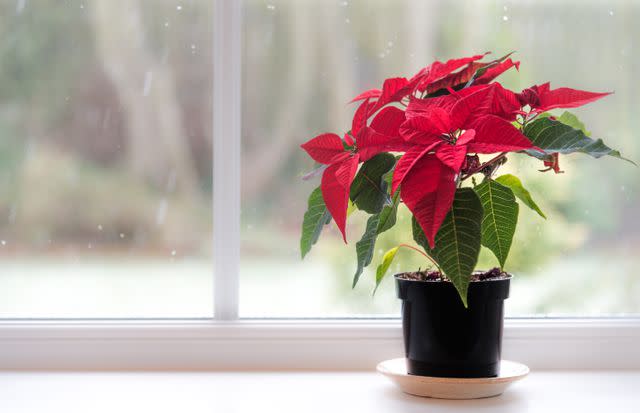
Barbara Eddowes/Getty Images
One of the most popular Winter flowering plants you'll see around the holidays, the Poinsettia has attractive bright red ‘flowers’ that are actually specialized leaves known as bracts. “The true flowers of this species are actually the yellow petals in the center,” says Lalicata. “The Poinsettia will thrive well in medium to bright indirect light indoors, but is not suited for direct sun unless it's morning sun from an East window. Water every 1-2 weeks, allowing soil to dry out between waterings, and it can tolerate normal-average room humidity.”
African violets
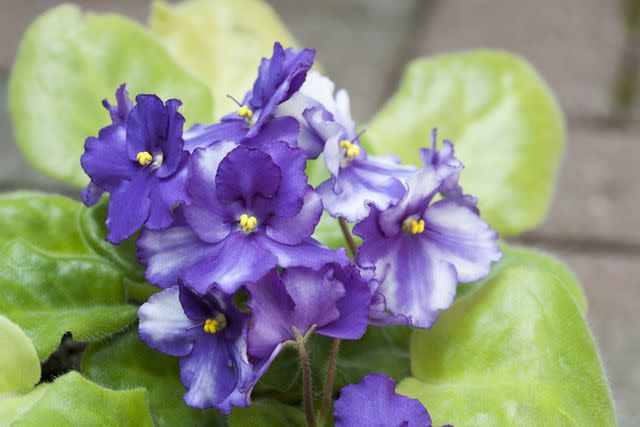
gladassfanny/Getty Images
Another popular houseplant prized for its colorful blooms and its ability to flower continuously and for long periods of time. Lalicata advises to keep your African Violet in medium-bright indirect light to morning direct sunlight for adequate growth and blooming as African violets that are kept in too low of light won’t bloom. She advises to allow the soil to dry out about halfway down between waterings, and bottom watering is usually best to avoid getting the leaves wet and causing crown rot. They can do well with normal room humidity but can benefit from higher humidity levels.
Phalaenopsis Orchids
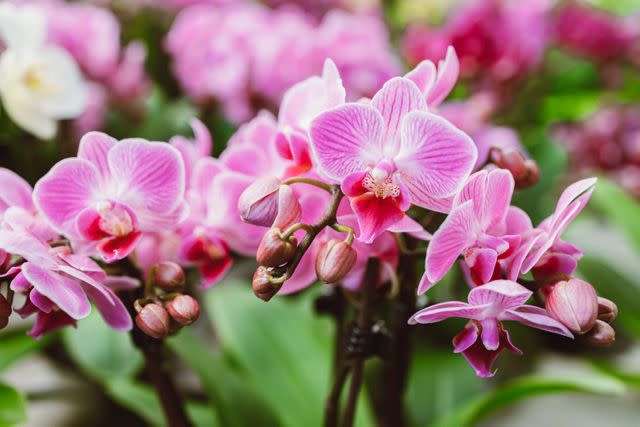
Elena Medoks/Getty Images
The Phalaenopsis Orchid, also known as "Moth" or "Beginner" Orchid have beautiful, long lasting flowers that can adorn your home for up to 2-3 months under optimal care. “Growers are able to manipulate their blooming cycle so you can always find a blooming orchid at a location near you year-round, even in winter,” says Lalicata. “Orchids thrive in bright indirect light, but can tolerate medium indirect light or morning direct sun from an east window. Water every 1-2 weeks, allowing potting medium to dry out between waterings. If kept in a decorative, cache planter, pour out excess water after watering. When repotting, only use orchid bark mix and not traditional potting mix.”
Cyclamen
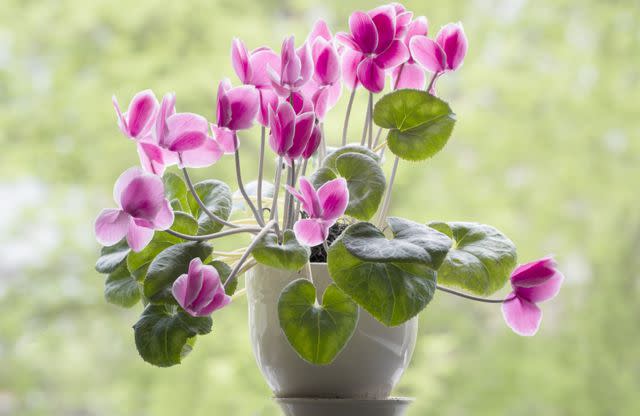
Margarita Zhilova/Getty Images
Cyclamen make great houseplants year-round with their beautiful foliage, but is also loved for its colorful flowers that range in pink, purple, red and even white. Lalicata advises Cyclamen grows well in medium-bright indirect light to morning direct sunlight for adequate growth, however they are not suited for low light conditions like a north window provides, an east window is the most ideal or slightly diffused west. “Allow the soil to dry out about halfway down between waterings, and avoid splashing water onto the leaves,” she says.
Outdoor Winter Flowering Plants
Camellia
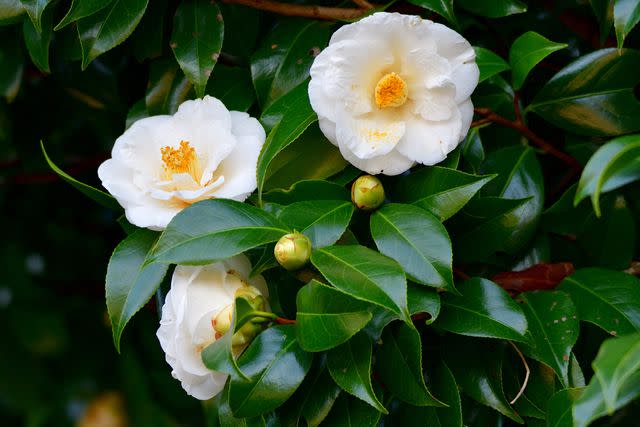
Getty Images
Lovely broadleaf evergreens used to provide consistent structure and early color in a garden, the camellia comes in enough different varieties to keep your garden in bloom every month of the year. “This shrub is low maintenance and suitable for even the most inexperienced gardener,” says Jessica Mercer, senior content editor for PlantAddicts.com, a leading online plant retailer. “There are two main types of camellias, Camellia japonica and Camellia sasanqua with a smattering of other types. Sasanquas bloom from mid fall to early winter (early to mid-season), whereas japonicas bloom from mid-winter to spring (mid to late season). Hybrids and other types can vary in their bloom times.”
Hellebore
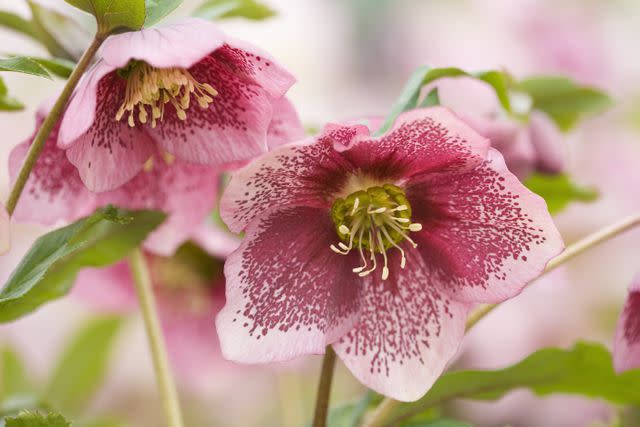
Clive Nichols/Getty Images
Wonderful, reliable stars of the winter garden, the hellebore is a long-lived plant. “Originally from Eurasia, Hellebore are most commonly called either Christmas Roses or Lenten Roses because those species bloom near the holidays with flowers mimicking single roses,” says Mercer. “These easy-care perennials prefer light to dappled shade and their hardiness ranges from USDA zones 5-9, and the foliage is usually evergreen.”
Pansy
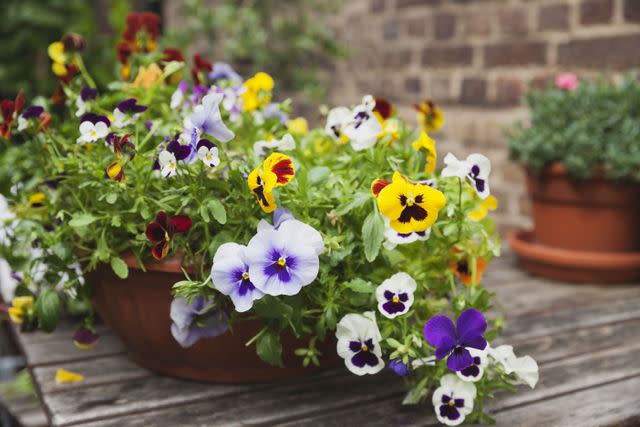
Westend61/Getty Images
Herbaceous perennials that make a bold statement, the pansy’s flat-front blooms are the main attraction with overlapping petals in striking shades of purple, white, yellow, or red. “This cold-hardy plant is a perennial in USDA zones 4 through 9, although there are many different cultivars, so check the variety before planting” advises Mercer. “Many varieties do best in part sun or shade, making this plant a favorite for low-light areas in need of some colorful blooms and style.
Primrose
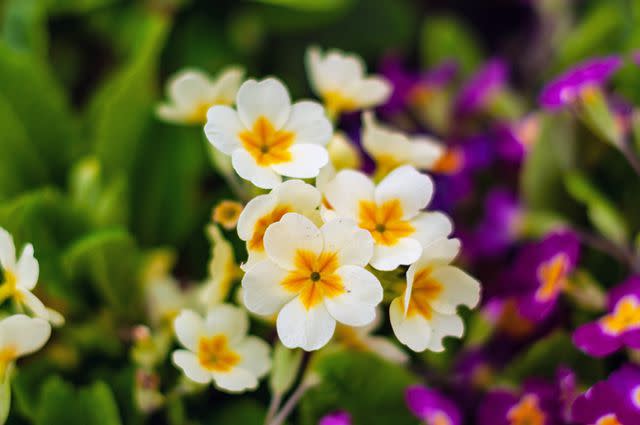
LeliaSpb/Getty Images
Low-maintenance early bloomers for shady gardens, the primrose comes in a spectrum of different colors, including red, orange, yellow, blue, purple, white and pink. Mercer advises that the Primrose hardiness varies between cultivars, but usually you’ll find that they’re hardy in USDA zones 3 through 8. “Primroses prefer slightly moist and acidic soil, and plenty of shade,” advises Mercer.
Winterberry Holly
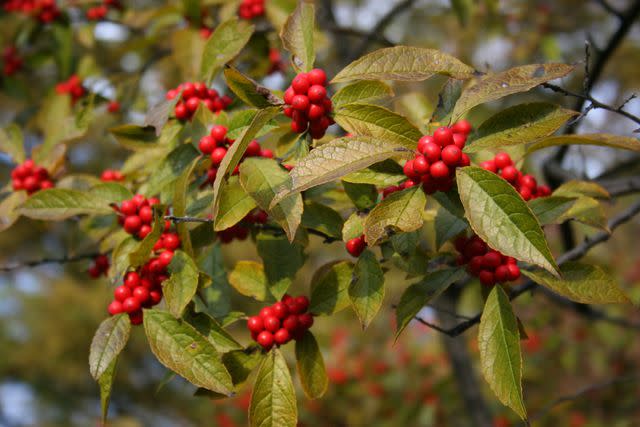
Van Swearingen/Getty Images
The Winterberry Holly boasts dark green leaves are elliptical and have serrated edges. “Female plants produce greenish-white flowers that give way to bright red berries,” says Mercer. “This is a deciduous shrub, and while the foliage falls away in the fall, the berries stay in place throughout the winter. Winterberry Holly plants need 6 to 8 hours of sunlight, so plant them in full to partial sun.”
For more Real Simple news, make sure to sign up for our newsletter!
Read the original article on Real Simple.

